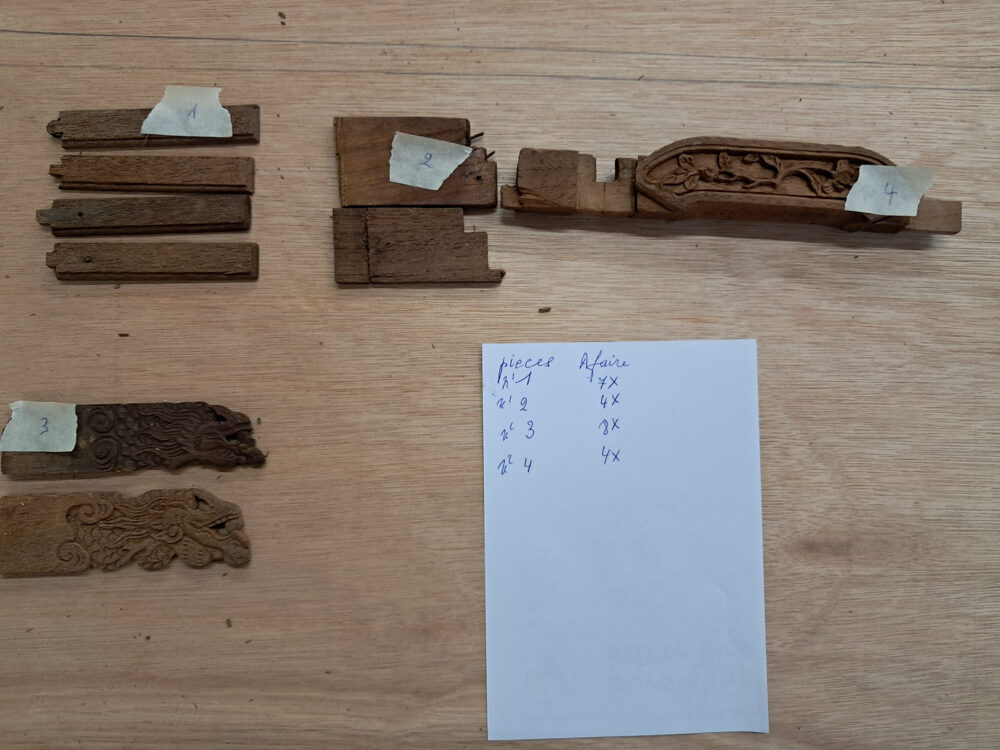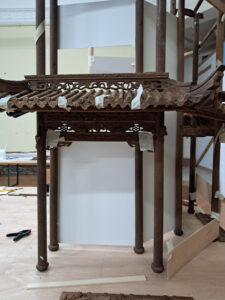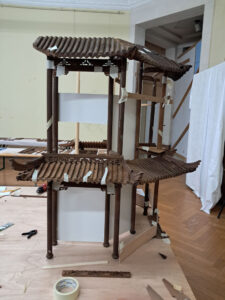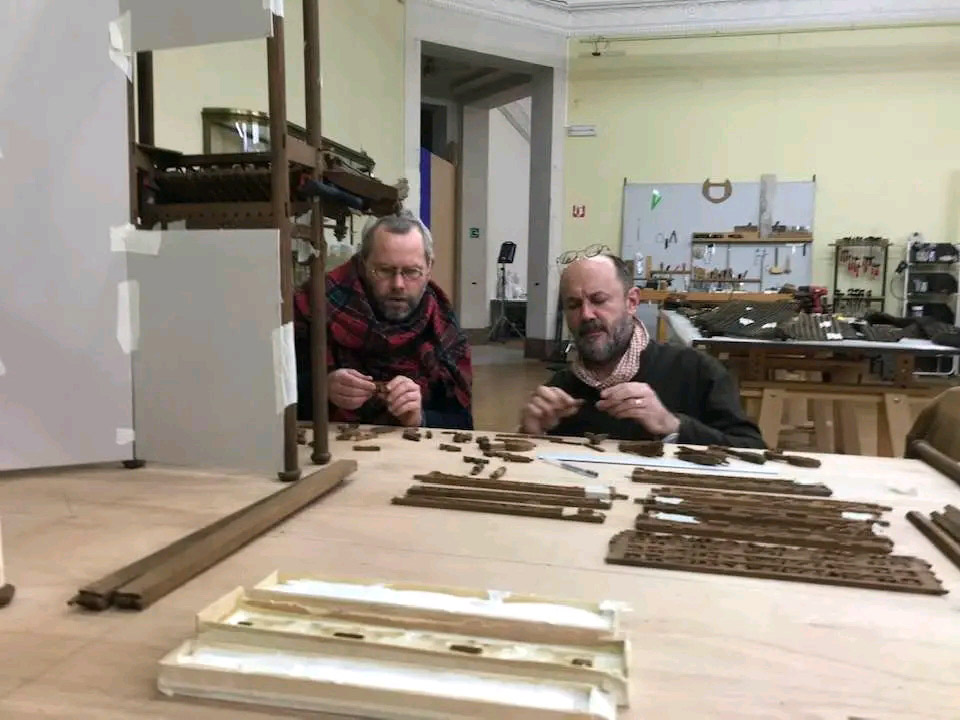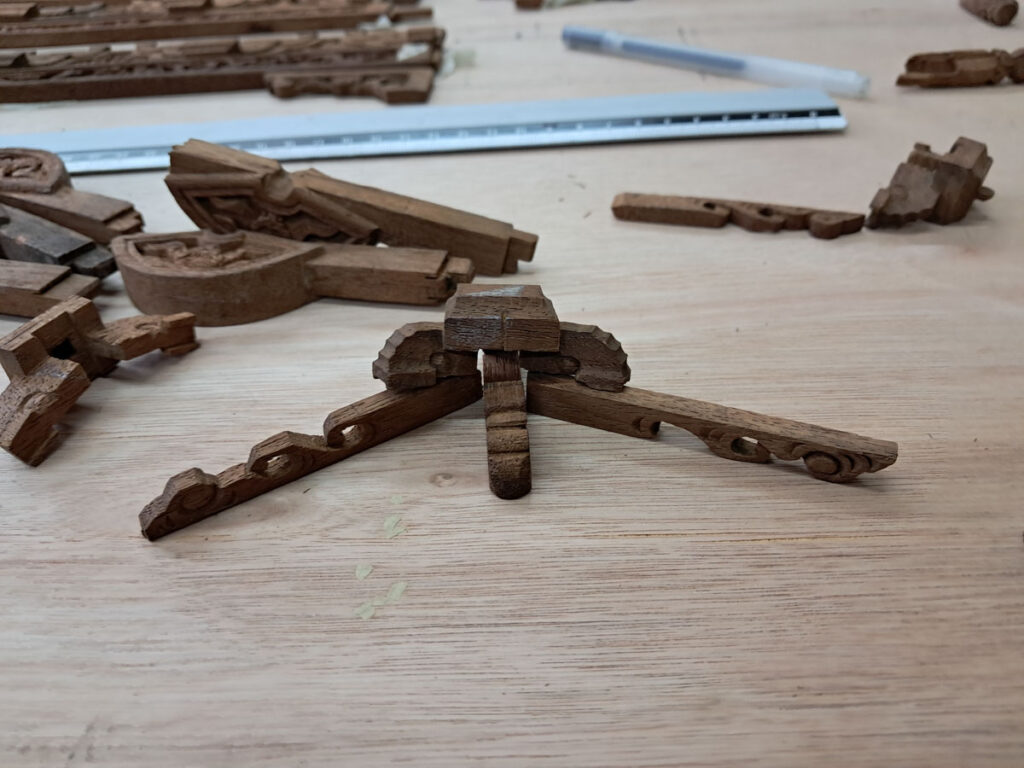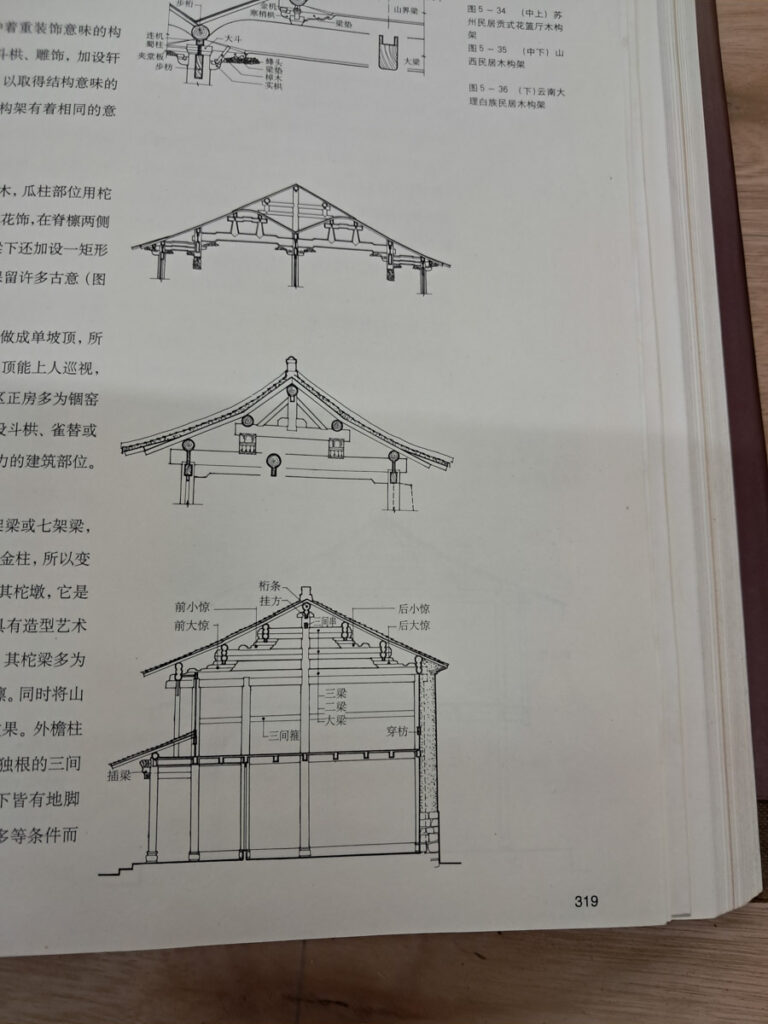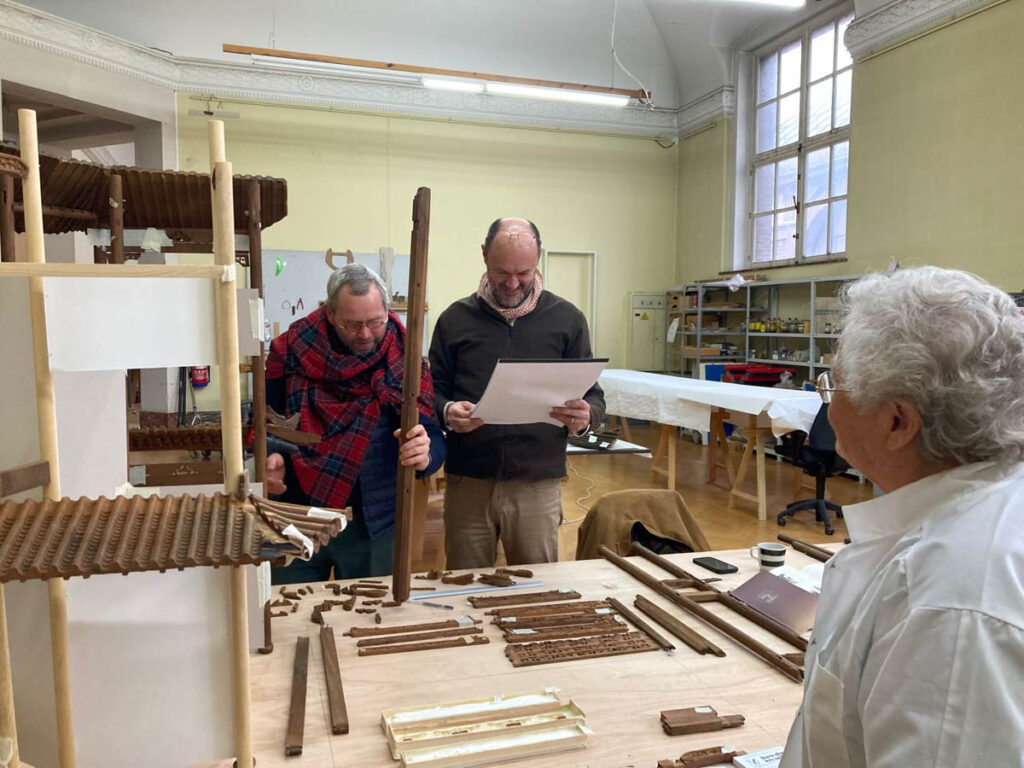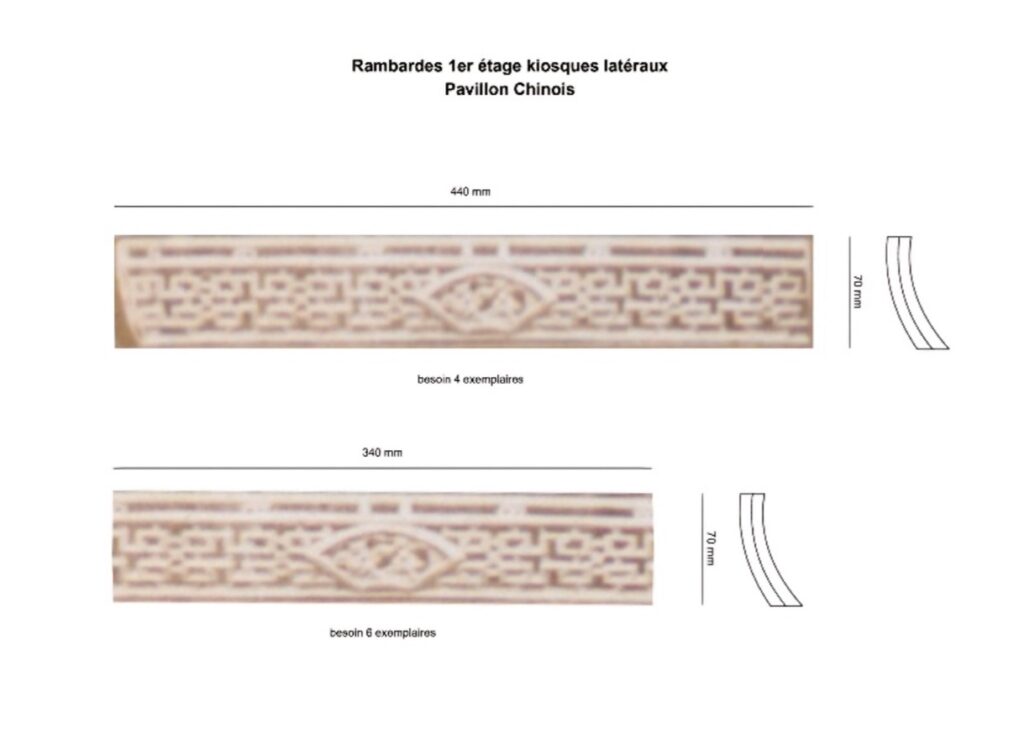We are continuing to inventory the missing parts and casting the elements to be reproduced.
We are temporarily positioning the upper roof on the side section.
The meeting in front of the model with Nicolas Godelet, architect, was very informative (see attached report).
| Email sent on December 11, 2024, following yesterday’s meeting with Diane Hennebert and Nicolas Godelet.
Dear all, Following the pleasant time we spent today at the Cinquantenaire in front of the Chinese pavilion model, here is a summary of our discussion: – Given the deficiencies, it is impossible to recreate the model identically. A structural simplification and an interpretation of the missing elements are necessary. For example, with the available information, we do not have a precise idea of the framework structure. We will develop a structure that will support the roof. This part will not be visible. For the visible parts, we will combine castings of existing pieces, which we need in larger quantities, with 3D prints created by vectorizing photos from the Shanghai notebook. We have also decided to give the entire model the same patina, i.e., the natural patina of the wood as it currently appears. We will retain the “imperfections” (scratches, chips…), particularly on the roofs. – We will not attempt to give the model a “dollhouse” appearance. Therefore, no interior elements such as parquet flooring, mirrors, or lighting fixtures will be added. It will remain a preliminary model for the construction of the Chinese section of the Chinese palace. Along the same lines, we will primarily rely on photographs and the model’s existing elements. When this is not possible, we will refer to the existing situation as a last resort. For non-existent elements that still pose problems (e.g., roof statuettes for which we have no precise idea), instead of an overly fanciful interpretation, we will not add them. – For transport, the model will be divided into 3 parts: the 2 side sections and the central section. – Thanks to Nicolas, his time, and his knowledge of Chinese architecture, we have gained significant insight into traditional architectural structures, the iconography of the bas-reliefs, and the representations of decorative elements on the eaves (invisible in photos). Furthermore, his knowledge of the Chinese language, useful for the numerous inscriptions and for positioning the friezes with animal representations, has been and will continue to be invaluable. The aim is to avoid making erroneous interpretations or placements due to lack of knowledge. – We will need to go in situ to verify the Dogon stacks (roof load distribution structures), which, fortunately, are only decorative in the model. – We have discovered the parts for the construction pillars that frame the doors, which is also a significant breakthrough. We will need to remake them. Before contacting an independent carpenter, we will ask Nathalie Vandeperre if the museum’s carpentry workshop can produce them for us. – Tomorrow morning, we will conduct an inventory with measurements and reference photos of the missing elements from the two side sections, in order to request a price estimate and assess the feasibility of 3D printing from two different specialists, including Gwenaëlle de Spa, who works in a Fablab. – For now, we are focusing on the side sections and the roofs. However, we are keeping an eye on the main facade and will soon begin research on the subject. Thibaut De Coster |
We need structural parts. We are missing some, and those we have are bent. The Cinquantenaire carpentry workshop is manufacturing them for us.
We are conducting a precise survey of the missing parts for the side sections.
